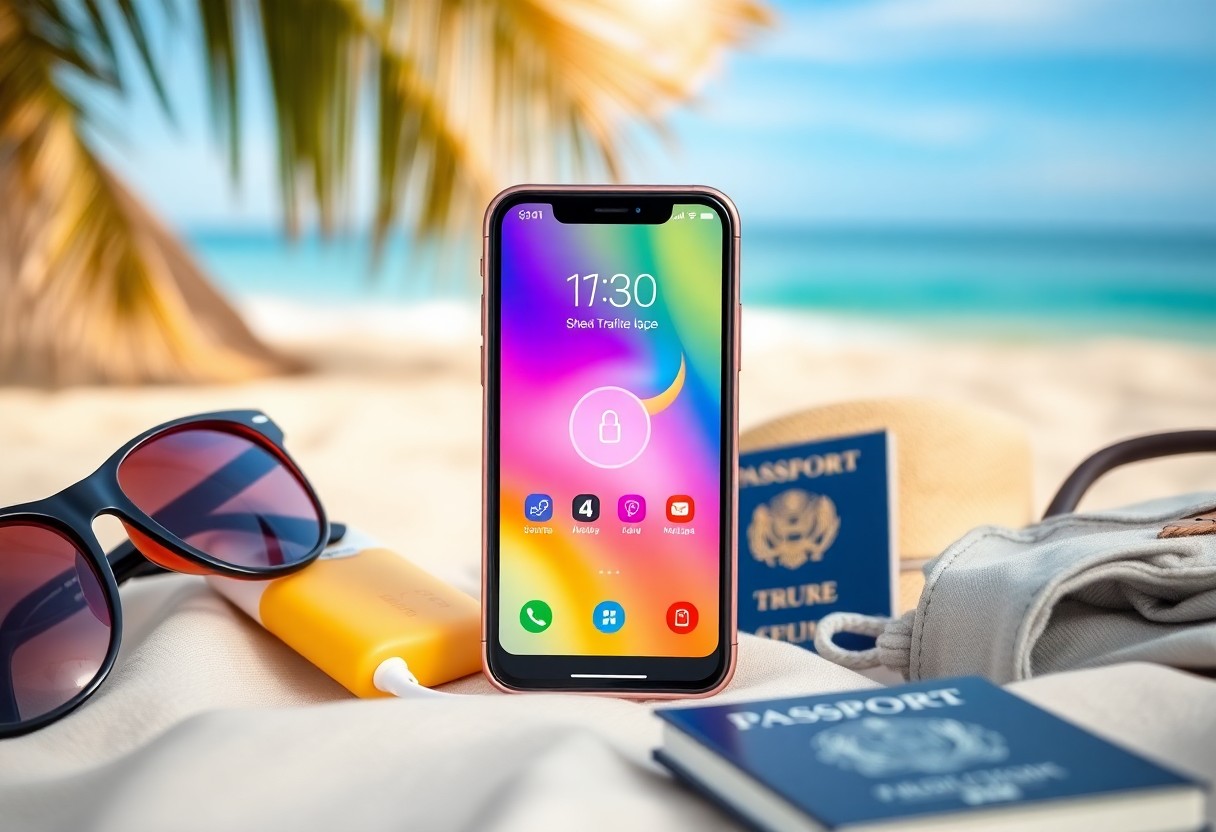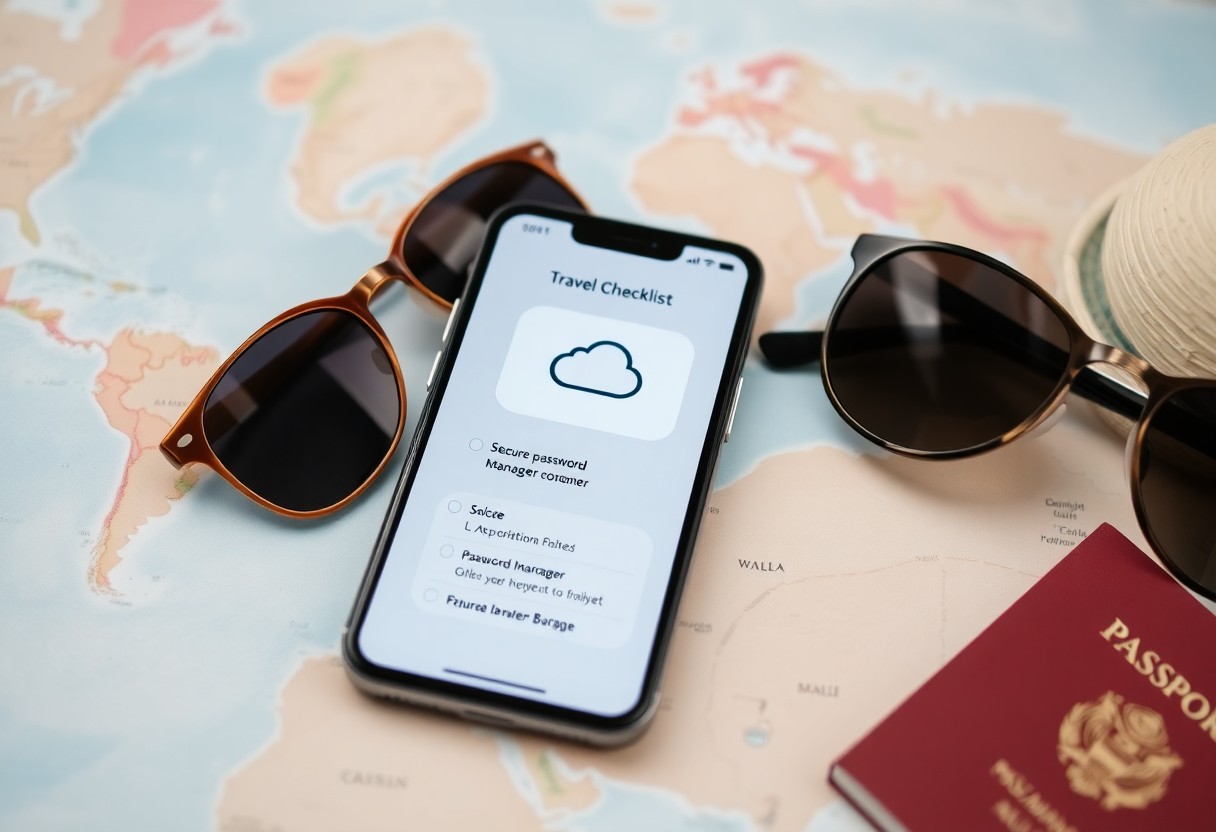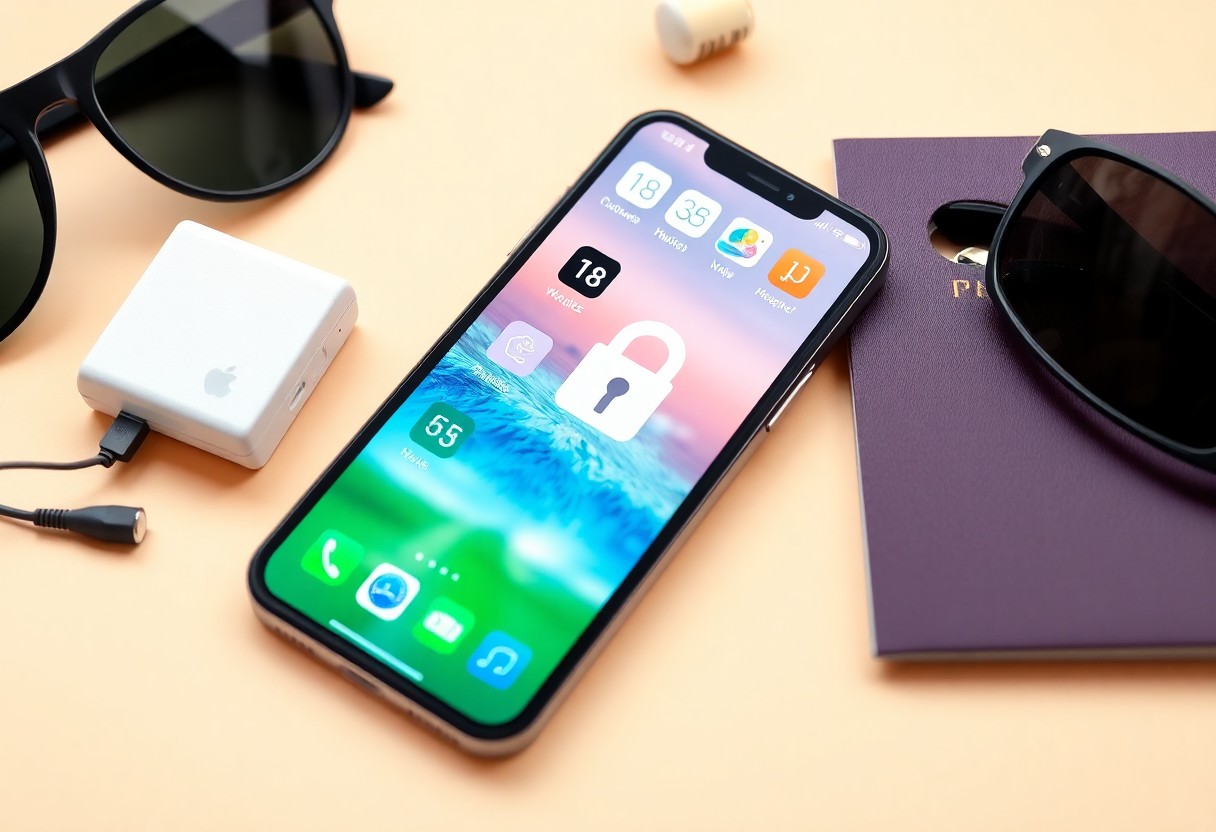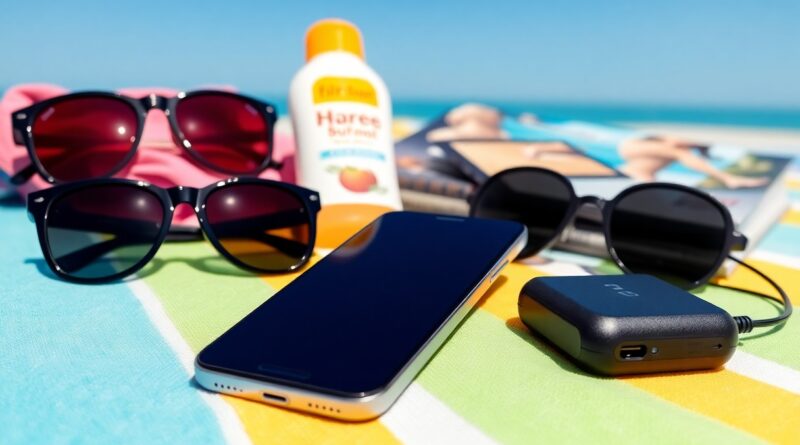How to Prep Your Phone for Summer Travel: Data, Security, and Storage
Security is your top priority when preparing your phone for summer travel, but it’s equally important to ensure your data and storage are optimized. You need to protect sensitive information while staying connected and capturing memories without running out of space. In this guide, you’ll learn practical steps to safeguard your device, manage storage efficiently, and keep your data safe so you can travel confidently and enjoy every moment.

Optimizing Data Settings for Travel
Adjusting your data settings before heading out ensures you maintain connectivity without incurring unexpected charges. Prioritize apps that need background data, disable unnecessary updates, and set your phone to alert you when approaching data limits. Tailor your usage to prevent data overages, especially in areas where roaming fees can skyrocket. Taking control of your data consumption helps you stay connected efficiently while avoiding disruptions or excessive costs.
Data Management: Roaming vs. Wi-Fi
Switching between roaming and Wi-Fi networks can drastically affect your data expenses. Roaming often carries higher rates, so connecting to trusted Wi-Fi hotspots for downloads, streaming, and updates is an effective way to save. Activate airplane mode and manually enable Wi-Fi to prevent automatic roaming. Additionally, download offline maps and content before travel to minimize real-time data use. Strategic toggling between these options can extend your plan’s limits and reduce surprises on your phone bill.
Compression Techniques for Data Efficiency
Enable built-in compression features on browsers and apps to reduce data loads without sacrificing performance. Services like Google Chrome’s Lite Mode compress images and web pages, cutting data usage by up to 60%. Messaging apps offer options to lower image and video quality sent or received, which helps manage bandwidth when connectivity is limited. Leveraging these tools ensures smoother browsing and communication without exhausting your data cap prematurely.
Beyond basic browser compression, apps like Opera Max or data-saving VPNs further compress multimedia and slow-loading content across multiple apps, achieving overall data savings of 30–50%. Some streaming platforms allow you to choose lower bitrate streams or download content in advance in compressed formats. By integrating these compression techniques, your phone consumes data more judiciously, making your limited travel plans stretch farther without compromising important functionality or access to content.
Locking Down Security Before Departure
Securing your phone ahead of travel can prevent significant headaches abroad. Activate automatic lock with a strong passcode or biometric authentication like fingerprint or facial recognition. Disable Bluetooth when not in use to minimize exposure. Employ VPN services to encrypt your internet connection, especially when you access public Wi-Fi at airports or cafés. Regularly back up data to encrypted cloud storage or offline drives. You might also want to review app permissions to block unnecessary access. These steps collectively keep your sensitive information locked down, ensuring your digital life stays secure throughout your trip.
Essential Security Apps You Shouldn’t Miss
Several apps can bolster your phone’s defenses during travel. Look into password managers like LastPass or 1Password to generate and store complex passwords securely. Antivirus apps such as Avast Mobile Security offer real-time protection from malware and phishing. Signal or Telegram provide encrypted messaging options for private communications. Mobile firewall apps like NoRoot Firewall can regulate outgoing traffic, reducing hacking risks. Installing these can create multiple security layers, protecting your data from malicious actors you might encounter in unfamiliar networks.
Two-Factor Authentication: Your First Line of Defense
Activating two-factor authentication (2FA) adds a vital security checkpoint, requiring not only a password but a secondary verification step—usually a temporary code sent to your device or generated by an authenticator app. Services such as Google Authenticator, Authy, or Microsoft Authenticator greatly simplify this process. By enabling 2FA on important accounts—email, banking, and travel platforms—you drastically lower the chances of unauthorized access, keeping your information safe even if your password is compromised.
Delving deeper, 2FA effectively mitigates risks from common attack methods like phishing or credential stuffing, which account for over 80% of cyber breaches according to recent statistics. By demanding a second form of identification—often dynamically generated and time-sensitive—it prevents cybercriminals from gaining entry with stolen passwords alone. Utilize apps that support offline codes to ensure access even when roaming abroad without cellular service. Integrating 2FA is one of the most effective safeguards you can implement ahead of any trip, transforming your login credentials into near-impenetrable gates.

Streamlining Storage for a Hassle-Free Journey
Your phone’s storage can fill up quickly, especially with photos, apps, and cached data piling up before a trip. Freeing up space not only improves your phone’s performance but also ensures room for all those summer memories. By routinely managing your files and optimizing storage settings, you can avoid those frustrating “storage full” alerts while on the go. This way, your device stays responsive and ready for anything your travel itinerary demands.
Identifying and Deleting Unnecessary Files
Start by scanning your device for large files, rarely used apps, or redundant downloads cluttering your storage. Many phones have built-in storage analysis tools that highlight space-hogging items, like duplicate photos or old videos. Clearing cache data from apps such as social media or streaming services can reclaim hundreds of megabytes. Deleting old screenshots, expired documents, and unused media before leaving can free up gigabytes of space for new travel content.
Effective Cloud Storage Solutions for Travelers
Utilizing cloud storage platforms like Google Drive, Dropbox, or iCloud allows you to offload photos, documents, and other media without sacrificing local space. These services offer automatic syncing and backup functionalities, ensuring your files remain accessible yet secure. Subscription plans provide ample storage options, often starting at 100GB, ideal for travelers capturing high-resolution photos and videos. Cloud storage also simplifies file sharing with travel companions or accessing your documents across multiple devices seamlessly.
Diving deeper, cloud storage providers frequently update their security and accessibility features. For instance, Google Photos offers automatic photo organization and even intelligent album creation based on trips or dates. Dropbox’s Smart Sync lets you see all your files without storing them locally, saving precious phone space. Choosing a cloud service integrated with your phone’s ecosystem minimizes the effort of manual backups and enables offline access for times when you’re in remote locations without connectivity.
Essential Travel Apps: Navigating the Digital Landscape
Equipping your phone with the right travel apps transforms your journey, offering seamless navigation, bookings, and local insights. Apps like Google Maps and Citymapper provide real-time transit updates, while TripIt consolidates travel itineraries in one spot. Language apps such as Duolingo or Google Translate break communication barriers instantly, and offline maps ensure you’re never lost without data. Selecting apps that match your destination’s demands means you spend less time fumbling and more time exploring.
Best Apps for Local Travel and Navigation
Local transit apps like Moovit or Transit deliver up-to-date schedules and step-by-step directions tailored to your destination’s public transport. Ride-sharing services such as Uber or Lyft can often save you time in unfamiliar cities, and bike-share platforms offer an eco-friendly way to explore. Offline maps from Maps.me or HERE WeGo become indispensable in areas with spotty coverage, allowing smooth navigation without relying on mobile data.
Social Media Management While Traveling
Maximizing your travel memories requires managing multiple social accounts efficiently. Buffer and Hootsuite enable scheduled posts and monitoring interactions without needing constant online presence. Whether documenting epic adventures on Instagram or sharing live updates on Twitter, these apps help you maintain engagement while freeing up time to enjoy your trip fully.
Diving deeper, social media management tools handle multi-platform coordination, analytics, and hashtag suggestions tailored to your travel content, boosting reach and engagement. Integrations with photo-editing and content creation apps streamline your workflow, and offline scheduling lets you craft posts whenever inspiration strikes, even without internet access. Leveraging these tools means enhancing your digital presence effortlessly, turning casual posts into captivating stories that resonate worldwide.

Preparing for Charging and Connectivity Challenges
Anticipate the unpredictability of power sources and network access by equipping your phone setup with reliable solutions. Carrying a backup battery with sufficient capacity can bridge the gap during long outdoor excursions without outlets. Moreover, packing versatile adapters ensures you can plug in anywhere from European cafés to Asian hotels. Planning for offline availability by pre-downloading maps and entertainment also cuts reliance on spotty Wi-Fi. By preparing these imperatives, you avoid frustrating downtime and keep your phone powered and connected wherever your summer adventures take you.
Recommended Backup Battery Options
Select power banks with at least 10,000mAh to recharge most smartphones twice, balancing portability and capacity. Models like Anker PowerCore 20,100 or RAVPower with quick charge support provide fast, multiple device charging. Look for lightweight designs under 200 grams to keep your bag manageable. Some units even feature solar charging panels, beneficial if you’ll be outdoors for multiple days. Bringing along a fully charged backup battery keeps your phone alive during transit delays, hiking, or beach days without electrical outlets.
Universal Adapters and Other Travel Necessities
A compact universal adapter supporting plugs across over 150 countries avoids incompatible sockets, no matter your destination. Choose those integrating USB-C, USB-A ports, and an AC outlet for flexible device connections. Multiport chargers with surge protection enhance safety in regions prone to power fluctuations. Don’t overlook imperatives like a durable charging cable, preferably braided to resist wear or a retractable design for convenience. These tools ensure uninterrupted power access amidst varying outlet types and charging standards globally.
Universal adapters typically incorporate interchangeable plugs for regions including North America, Europe, the UK, Australia, and Asia, so you won’t scramble for adapters in transit. Some models now offer dual USB-C PD ports, allowing simultaneous fast charging of your phone and power bank. Compact sizes under 100 grams fit snugly in carry-ons or even pockets, and advanced versions include built-in circuit protection to guard against surges or short circuits. Investing in a high-quality universal adapter simplifies charging logistics, enabling you to focus more on your trip than finding compatible outlets.
To wrap up
Drawing together everything you’ve learned, preparing your phone for summer travel involves managing your data, enhancing security, and optimizing storage to ensure a smooth experience. By backing up important files, enabling strong security settings, and clearing unnecessary content, you protect your device and personal information. Stay informed on best practices by exploring resources like What are some security measures I should take for my …. Taking these steps empowers you to travel confidently with your phone fully prepared.
Q: How can I ensure my phone has enough storage for summer travel photos and videos?
A: To make sure your phone has adequate storage, start by deleting unused apps, clearing cache files, and removing duplicate or unnecessary photos and videos. You can also back up important media to cloud services such as Google Photos or iCloud, then delete local copies to free up space. Additionally, consider transferring files to an external SD card if your phone supports it, or to a computer before you leave.
Q: What steps should I take to protect my phone’s data and privacy during travel?
A: Before traveling, activate strong security measures like a PIN, password, or biometric lock. Enable two-factor authentication for your key accounts to add an extra layer of protection. Turn off Bluetooth and Wi-Fi when not in use to reduce exposure to unsecured networks, and avoid connecting to public Wi-Fi without a trusted virtual private network (VPN). Also, keep your phone’s operating system and apps updated for the latest security patches.
Q: How can I manage mobile data usage effectively while traveling?
A: To control data consumption, check your mobile plan to understand your data limits and roaming charges. Download offline maps and entertainment such as podcasts, music, or shows before your trip to reduce streaming. Disable background app refresh and limit notifications to prevent apps from using data without your knowledge. Use data monitoring tools available in your phone settings to track and manage your usage during travel.
Q: What precautions should I take regarding phone theft or loss during summer travel?
A: It is helpful to enable remote tracking features like Find My iPhone or Google Find My Device before you travel. Back up your data regularly so you can restore it if your phone is lost or stolen. Keep your phone in secure pockets or bags and avoid leaving it unattended in public places. Consider installing an app that can remotely lock or wipe your phone if it goes missing, to safeguard your personal information.
Q: Are there any tips for optimizing battery life during vacation activities?
A: To extend battery life while on the go, reduce screen brightness and enable battery saver mode. Close unused apps and disable non-crucial location services. Avoid using resource-intensive apps such as games or video streaming when battery is low. Carry a portable power bank or an extra charger to recharge your phone as needed throughout your trips. Additionally, turning off notifications or vibrating alerts can also help conserve battery.



